


When it comes to learning, not all individuals are the same. Each person has unique preferences for acquiring and processing information. Understanding the different types of learning styles can significantly enhance learning effectiveness. In this comprehensive guide, VTJ will also introduce the VARK model with four main kinds of learners. This is a valuable framework for identifying and accommodating various learning preferences.
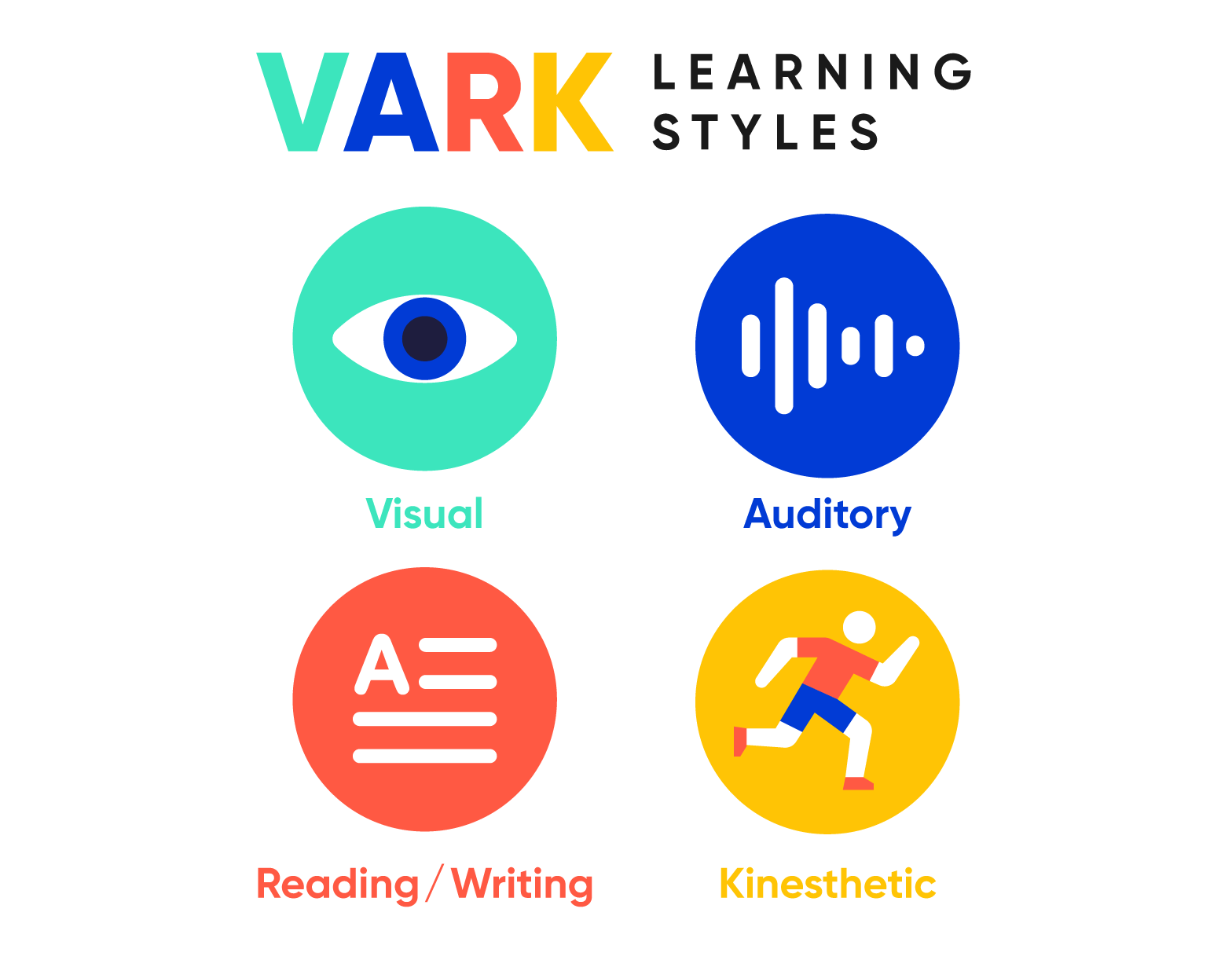
Learning styles refer to the different ways individuals prefer to acquire, process, and retain information. It is the preferred approach or method that individuals employ to engage with and understand new concepts and skills. There are various models and theories that categorize learning styles, but there are 4 common learning types including Visual, Auditory, Read/write, and Kinaesthetic.
Explore More Teaching Tips: How To Write a Lesson Plan in 6 Steps: The Complete Guide
The VARK Model is a widely used framework for understanding and categorizing different learning styles. It was developed by Neil Fleming and is based on four main learning preferences
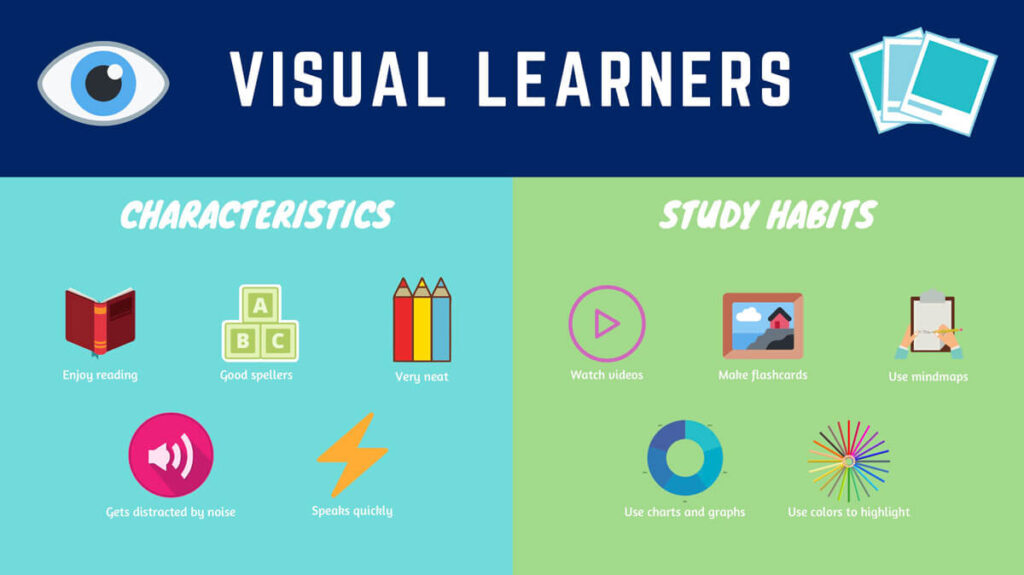
One of the styles of learners is to learn through visuals. Visual learners are individuals who have a predominant learning style that revolves around visual stimuli. They have a strong preference for processing and understanding information through visual aids, such as charts, diagrams, graphs, images, and videos.
Visual learners are highly attuned to visual cues and tend to have a good visual memory, allowing them to recall information by mentally picturing images or scenes. They often excel in tasks that involve visual organization, spatial awareness, and interpreting visual representations of information.
Discover Related Guides: 20+ Effective Classroom Management Strategies and Techniques
Teachers should employ various strategies to enhance their learning experience. Incorporating visual aids, such as charts, diagrams, and images, helps these learners better understand and retain information. Visual learners benefit from note-taking, underlining or highlighting key points, and sketching during lectures or discussions, as it helps them visually organize and process the material. Utilizing slideshows, videos, and infographics to effectively present information in an appealing and engaging manner.
Continue Learning: Practical Tips to Deal with Negative Teacher
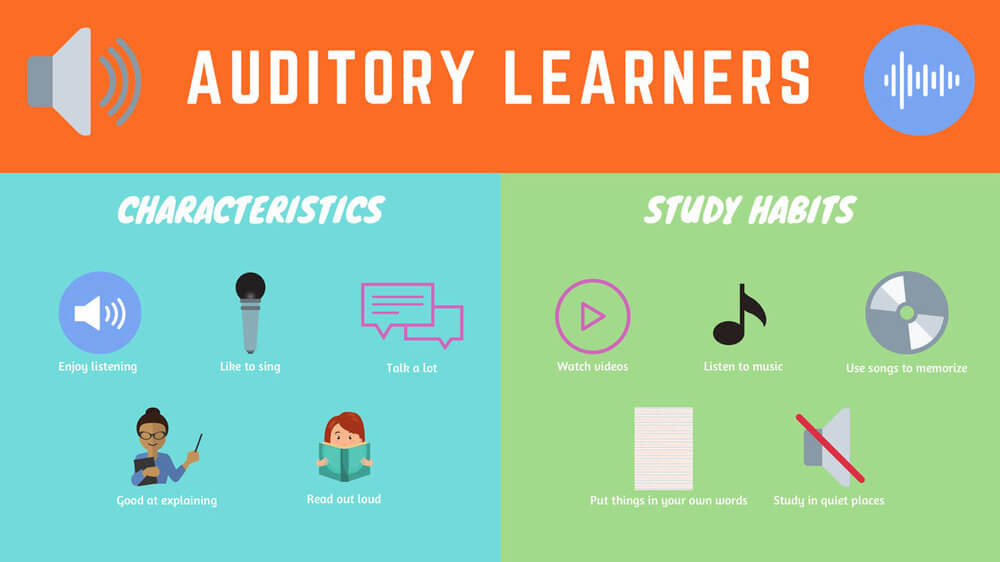
For auditory learners, their preferred mode of learning is through listening. They tend to absorb and retain information more effectively when it is presented in an auditory format. Therefore, attending lectures, tutorials, and group discussions is crucial for their learning process. Auditory learners have some of the following characteristics:
See More Strategies: What is TPR (Total Physical Response)? How can I use it?
For auditory learners, teachers should provide clear and concise verbal instructions and explanations. That helps auditory learners to better absorb and understand the information. Encouraging group discussions allows them to actively participate and process information through listening and speaking. Incorporating audio resources such as recorded lectures or podcasts can further enhance their learning experience.
Read Another Article: 15+ Ways to build confidence in your ESL students
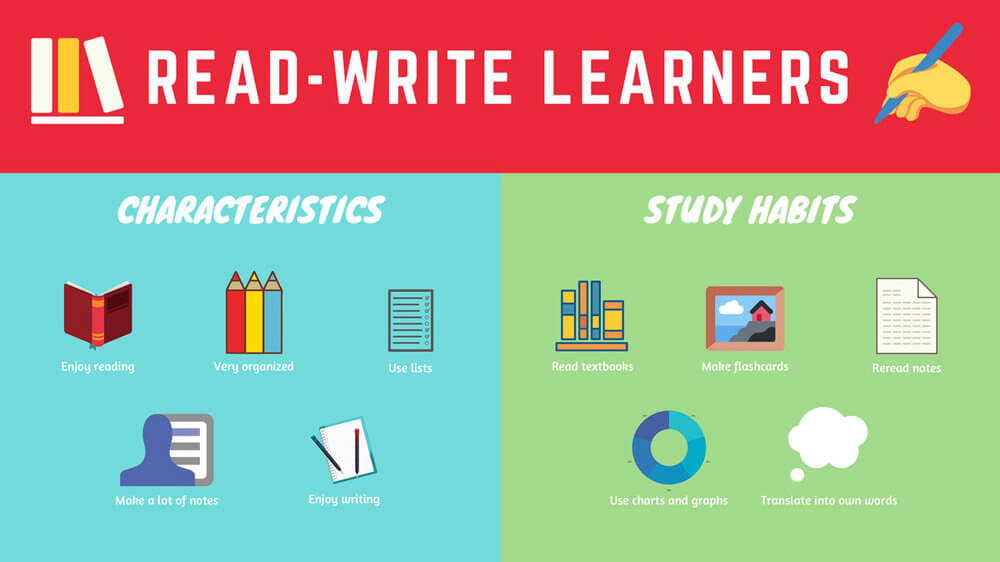
Reading and writing learners, also known as verbal-linguistic learners, prefer to learn through written words and text-based materials. They have a strong affinity for reading, writing, and engaging with written information. Here are some characteristics to help identify reading and writing learners:
Explore More Content: 14 Types of teaching methods for an effective lesson
To effectively engage these learners, teachers can incorporate various strategies. Firstly, providing ample reading materials, such as books, articles, and online resources, allows them to explore different topics and expand their knowledge. Encouraging active reading techniques, such as highlighting key points, taking notes, and summarizing information, helps them process and retain the material. Additionally, assigning writing tasks, such as essays, reports, or creative writing exercises, allows reading and writing learners to express their thoughts and ideas effectively. Providing constructive feedback on their writing helps them improve their skills and develop a deeper understanding of the subject matter. Incorporating group discussions and debates also allows these learners to engage in critical thinking and articulate their thoughts verbally. By combining these strategies, educators can create a stimulating learning environment that caters to the needs of reading and writing learners.
Discover Related Insights: What is blended learning? Types, Examples & Benefits?
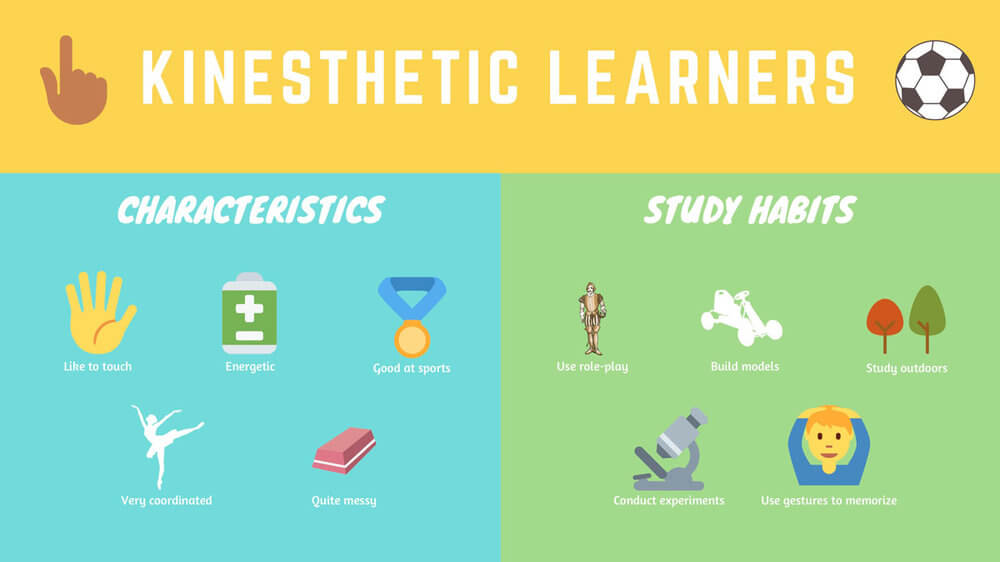
Identifying kinesthetic learners can be done through several observable characteristics. These learners tend to be highly active and prefer hands-on experiences. They often have difficulty sitting still for long periods and may move around frequently. Kinesthetic learners also have a strong sense of body awareness and may use gestures or physical movements while thinking or speaking.
They often excel in activities that involve physical coordination, such as sports or dance. These learners may struggle with traditional teaching methods that rely heavily on lectures or reading, as they prefer to engage with the material through physical interaction. They may benefit from activities that involve movement, such as role-playing, experiments, or simulations. Providing opportunities to engage in hands-on projects can greatly enhance their learning experience.
See Also This: Teacher Strengths and Weaknesses: How to Answer?
Teaching kinesthetic learners requires an instructional approach that actively engages their physical senses and encourages hands-on experiences. By incorporating movement, using manipulatives, encouraging hands-on projects, acting plays. Thông qua đó, educators can create a learning environment that caters to the needs of kinesthetic learners. These strategies allow students to actively engage with the material, make connections, and apply their knowledge in practical ways.
Understanding the different types of learning styles and utilizing the VARK model can greatly enhance your teaching effectiveness. By recognizing and catering to the diverse learning preferences of your students, you can create inclusive and engaging learning environments that foster meaningful understanding and retention of the content. Each student has these different learning types, so embrace the variety of learning types to unlock the potential of students.